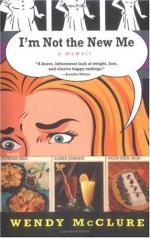“But, fellow-citizens, I shall conclude. Considering the great degree of modesty which should always attend youth, it is probable I have already been more presuming than becomes me. However, upon the subjects of which I have treated, I have spoken as I have thought. I may be wrong in regard to any or all of them; but, holding it a sound maxim that it is better only sometimes to be right than at all times to be wrong, so soon as I discover my opinions to be erroneous, I shall be ready to renounce them.
“Every man is said to have his peculiar ambition. Whether it be true or not, I can say, for one, that I have no other so great as that of being truly esteemed of my fellow-men by rendering myself worthy of their esteem. How far I shall succeed in gratifying this ambition is yet to be developed. I am young, and unknown to many of you. I was born, and have ever remained, in the most humble walks of life. I have no wealthy or popular relations or friends to recommend me. My case is thrown exclusively upon the independent voters of the county; and, if elected, they will have conferred a favor upon me for which I shall be unremitting in my labors to compensate. But, if the good people in their wisdom shall see fit to keep me in the background, I have been too familiar with disappointments to be very much chagrined.”
[Illustration: Black hawk war relics.
Tomahawk. Indian Pipe. Powder-horn.
Flintlock Rifle. Indian Flute.
Indian Knife.
From a photograph made for this Magazine.
This group of relics of the Black Hawk War was selected for us from the collection in the museum of the Wisconsin Historical Society by the Secretary, Mr. Reuben G. Thwaites. The coat and chapeau belonged to General Dodge, an important leader in the war. The Indian relics are a tomahawk, a Winnebago pipe, a Winnebago flute, and a knife. The powder-horn and the flintlock rifle are the only volunteer articles. One of the survivors of the war, Mr. Elijah Herring of Stockton, Illinois, says of the flintlock rifles used by the Illinois volunteers: “They were constructed like the old-fashioned rifle, only in place of a nipple for a cap they had a pan in which was fixed an oil flint which the hammer struck when it came down, instead of the modern cap. The pan was filled with powder grains, enough to catch the spark and communicate it to the load in the gun. These guns were all right, and rarely missed fire on a dry, clear day; but unless they were covered well, the dews of evening would dampen the powder, and very often we were compelled to withdraw the charge and load them over again. We had a gunsmith with us, whose business it was to look after the guns for the whole regiment; and when a gun was found to be damp, it was his duty to get his tools and ‘draw’ the load. At that time the Cramer lock and triggers had just been put on the market, and my rifle was equipped with these improvements, a fact of which I was very proud. Instead of one trigger my rifle had two, one set behind the other—the hind one to cock the gun, and the front one to shoot it. The man Cramer sold his lock and triggers in St. Louis, and I was one of the first to use them.”]




